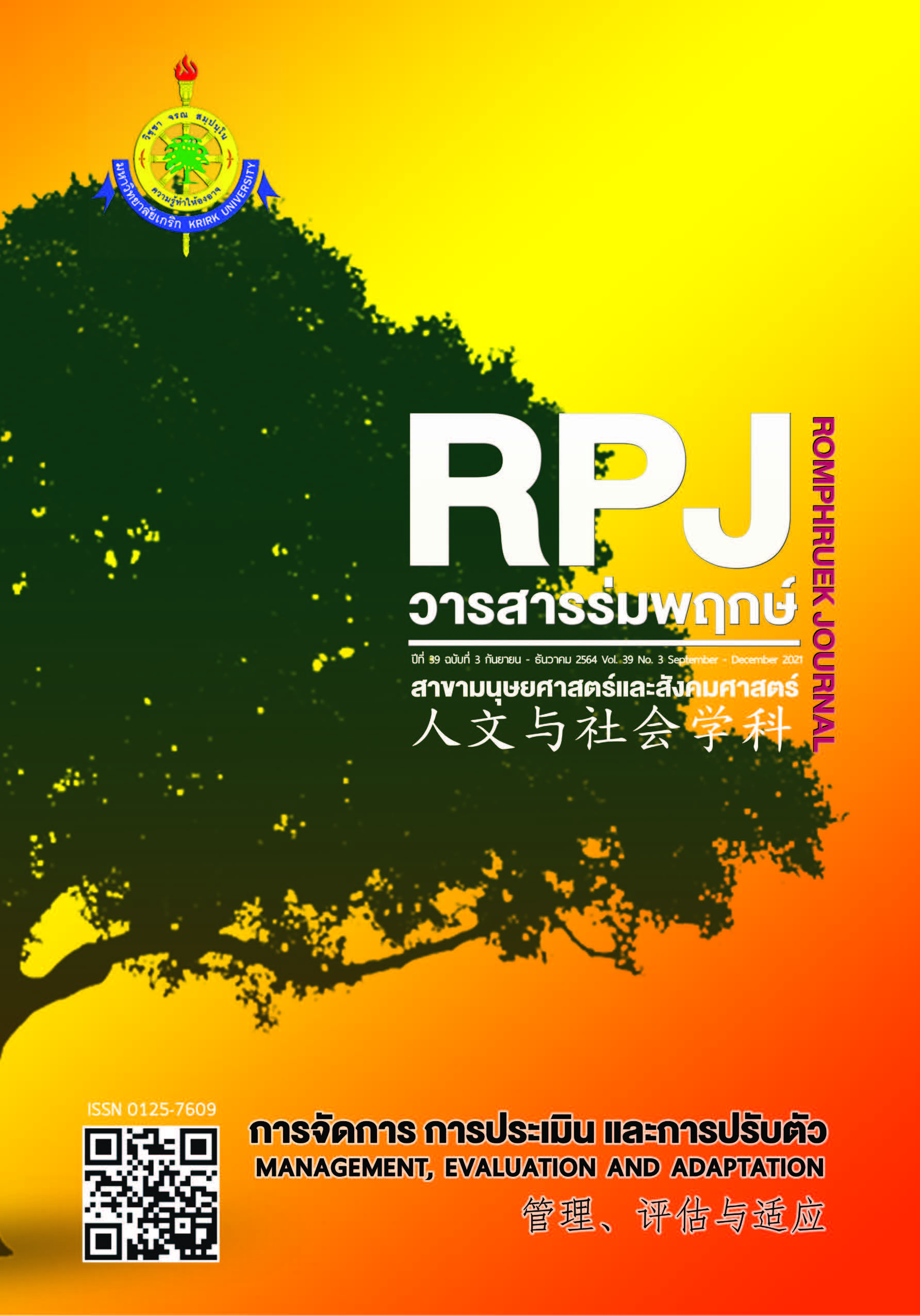Teaching Model for Enhancing the Creativity and Skills of Digital Media Designers
Main Article Content
Abstract
The objectives of this study were 1) to synthesize and develop a teaching model for enhancing the creativity and skills of digital media designers, 2) to assess the suitability of the teaching model, 3) to compare creativity and skills before and after learning with the model, 4) to compare the learning achievement, and 5) to study the correlation between the creativity and skills of students and learning achievement of the students studied by the developed model. The samples were 30 undergraduate students, the first year, Bachelor of Science program in Technology Multimedia and Animation, North Bangkok University, in the first semester of academic year 2020, selected by a purposive sampling method. The results of this study were as follows. The developed model was divided into 2 parts, the part of creative approach and skill approach. It was evaluated at the highest level of suitability. The comparison of creativity and skills before and after studied with the developed model tested by a t-test for dependent statistics found that the after learning scores were higher than those before learning scores at the significant level of .01. The learning achievement was analyzed by using the Analysis of Covariance statistics found that the learning achievement of the experimental group was higher than the control group at the significant level of .01. The correlation between the creativity and skills of students and the student learning achievement found that there was no significant correlation at the level of .05.
Article Details
Every article published in the Romphruek Journal of the Humanities and Social Sciences is the opinion and point of view of the authors. Thery're not the viewpoint of Krirk University or the editored department. Any part or all of the articles for pablication must be clearly cited.
References
ชุติสันต์ เกิดวิบูลย์เวช. (2560). สื่อดิจิทัลใหม่..สื่อแห่งอนาคต. กรุงเทพฯ : สำนักพิมพ์สถาบันบัณฑิตพัฒนบริหารศาสตร์.
ทิศนา แขมมณี. (2545). ศาสตร์การสอน. กรุงเทพฯ : สํานักพิมพ์แห่งจุฬาลงกรณ์มหาวิทยาลัย.
บวร เครือรัตน์. (2561). การพัฒนารูปแบบการจัดการเรียนการสอนเน้นความคิดสร้างสรรค์สําหรับนักศึกษาปริญญาตรีด้านการออกแบบ. กรุงเทพฯ : มหาวิทยาลัยเทคโนโลยีพระจอมเกล้าพระนครเหนือ.
บุญชม ศรีสะอาด. (2541). การพัฒนาการสอน. กรุงเทพฯ : สำนักพิมพ์ชมรมเด็ก.
ภูเมธ นิธิกุลปรีชา และ อารยะ ศรีกัลยาณบุตร. (2558). การออกแบบสื่อดิจิทัลสำหรับเจเนอเรชันซีในฐานะผู้ซื้อรถยนต์คันแรก. วารสารศิลปกรรมศาสตร์ จุฬาลงกรณ์มหาวิทยาลัย, 2(2), 86-95.
รอบทิศ ไวยสุศรี. (2557). การใช้เทคนิคบริหารสมองเพื่อเพิ่มผลสัมฤทธิ์ทางการเรียน. กรุงเทพฯ : มหาวิทยาลัยธุรกิจบัณฑิต.
วิชัย ประสิทธ์วุฒิเวชช์. (2542). การพัฒนาหลักสูตร สานต่อที่ท้องถิ่น. กรุงเทพฯ : ศูนย์เสริมปัญญาไทย.
สำนักงานการอุดมศึกษา. (2561). สถิติอุดมศึกษา. (10 มีนาคม 2561) สืบค้นจาก http://www.info. mua.go.th/info/.
สิริชัย ดีเลิศ. (2558). กระบวนการพัฒนาความคิดสร้างสรรค์ในสถาบันการศึกษาระดับอุดมศึกษาที่มีอัตลักษณ์เชิงสร้างสรรค์. วารสารวิชาการ มหาวิทยาลัยศิลปากร มนุษยศาสตร์ สังคมศาสตร์ และศิลปะ, 8(2), 1341-1360.
สุวิธิดา จรุงเกียรติกุล. (2561). ทักษะการเรียนรู้ในศตวรรษที่ 21 (The Twenty-First Century Skills). (15 มกราคม 2562) สืบค้นจาก https://www.trueplookpanya.com/blog/content/66054/-teaartedu-teaart-teaarttea.
Guilford, J.P. (1959). Traits of Creativity in Anderson, H.H., Ed., Creativity and Its Cultivation. New York : Harper & Row books.
Simpson, E.J. (1972). The Classification of Educational Objectives in the Psychomotor Domain. Washington DC. : Gryphon House, Inc.


